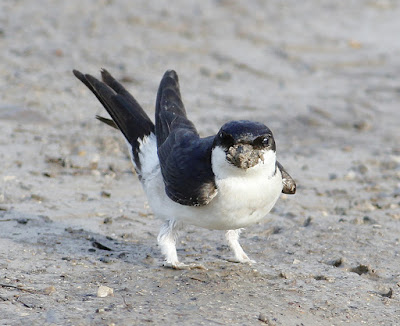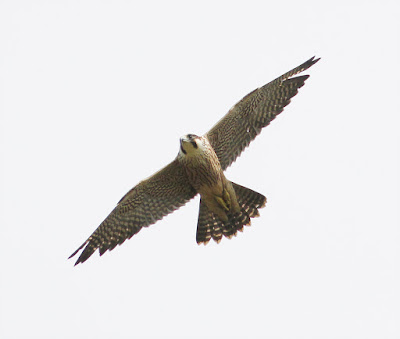Breakfast time - Rain splattered the conservatory roof, summer breezes shook the apple tree and the TV weather forecast for the day was gloom, but not as yet the doom. That arrives at the weekend with predictions of hail, thunderstorms and even a tornado! Welcome to an English summer where it’s definitely “Grim Up North”.
It's Grim Up North
It was now or never so I set off for a round of birding and ended up having a very respectable morning.
At Conder Green I found the usual selection of waders in the creeks dominated by 195 Redshank. Searching through the remainder of the birds found 21 Lapwing, 14 Teal, 4 Common Sandpiper, 5 Curlew, 3 Greenshank, 2 Oystercatcher, plus singles of Ruff and Snipe. On the pool - 2 Little Grebe, 1 Grey Heron, 1 Kingfisher and 1 Pied Wagtail.
At Conder Green I found the usual selection of waders in the creeks dominated by 195 Redshank. Searching through the remainder of the birds found 21 Lapwing, 14 Teal, 4 Common Sandpiper, 5 Curlew, 3 Greenshank, 2 Oystercatcher, plus singles of Ruff and Snipe. On the pool - 2 Little Grebe, 1 Grey Heron, 1 Kingfisher and 1 Pied Wagtail.
Many more wagtails were scattered across the extensive marsh of Bank End, with a minimum of 120 Pied Wagtail and feeding amongst them 7 Yellow Wagtail, 4 Meadow Pipit, 6 Linnet and 2 Wheatear. The hundreds of sheep which graze on the flat marsh here create a bonanza of insects for both wagtails and pipits.
Pied Wagtail
Yellow Wagtail
Bank End, Cockerham Marsh
I called at Chris’ farm to check out the Linnets and the Sand Martin colony. The Linnet flock was around 30 highly mobile birds while the Sand Martins now number approximately 45. The martins will surely be gone by this time next week, off to spend the winter in warmer climes.
The sky was bright enough to walk a circuit of Fluke Hall, through the wood, along the sea wall and then back along the hedgerows. This has been a “silent summer” and continues to be so as the only passerines I saw or heard were small handfuls of Robin, Linnet, Goldfinch and Tree Sparrow. Better was along the sea wall with 5 Stock Dove, 2 Buzzards and then a Red Fox which quickly sloped off into the undergrowth.
Towards Worm Pool were 3 Green Sandpipers together in the landside but still flooded ditch. The sandpipers saw me coming too and flew off at rapid speed with their characteristic loud jungle calls, flashing their white rumps like over-sized House Martins.
Red Fox
Towards Worm Pool were 3 Green Sandpipers together in the landside but still flooded ditch. The sandpipers saw me coming too and flew off at rapid speed with their characteristic loud jungle calls, flashing their white rumps like over-sized House Martins.
Green Sandpipers are a very rare breeding bird in Britain, with just a handful of pairs nesting each year in hidden parts of the Scottish Highlands. These three are on their autumn migration, and have already travelled more than a thousand miles from the wet woodlands of Scandinavia.
Scanning the marsh I noted a Merlin sat on a post, a favourite hunting ploy of the tiny raptor. I’d not seen or heard any Meadow Pipits but the Merlin obviously saw one and took to the skies when from the bright plumage, long wings and body size I could see that it was a juvenile female. The Merlin harried and chased the pipit, rising above the little bird and stooping at great speed a couple of times but without success.
The pipit found safety by diving into a field of maize but the Merlin chased it all the way and didn’t give up until the pipit was deep in the growing maize. So honours even and great birding.
Merlin
There are more birds and pictures soon from Another Bird Blog’s northern summer.
Linking today to Anni's Blog and Eileen's Saturday Blog.
Linking today to Anni's Blog and Eileen's Saturday Blog.






































































